
The modified 9CrMo steels, such as Grade 91, Grade 92, and HT9, are materials of choice for fossil-fuel-fired power plants and Next Generation Nuclear Plants (NGNP). Both of them are critical in addressing energy demand, mitigating greenhouse gas emission, reducing SOx and NOx emissions, and increasing efficiency. NGNPs and supercritical power plants are designed to operate at higher temperature and pressure. Furthermore, these plants are expected to run for longer service periods and designed to have thinner component thickness. Operating temperature of reactor pressure vessels (RPV) in some variant of NGNPs can vary between 300 and 650°C and the vessels will be double the size of typical light water reactors. Efficiency of fossil-fuel-fired power plants strongly depends on temperature and pressure of steam being generated. One percent increase in net efficiency reduces emission of CO2, NOx, SOX, and particulates by 2.4 metric tons, 1.8 metric tons, 1.8 metric tons, and 0.45 metric tons, respectively, while also reducing fuel costs by 2.4 percent [1].
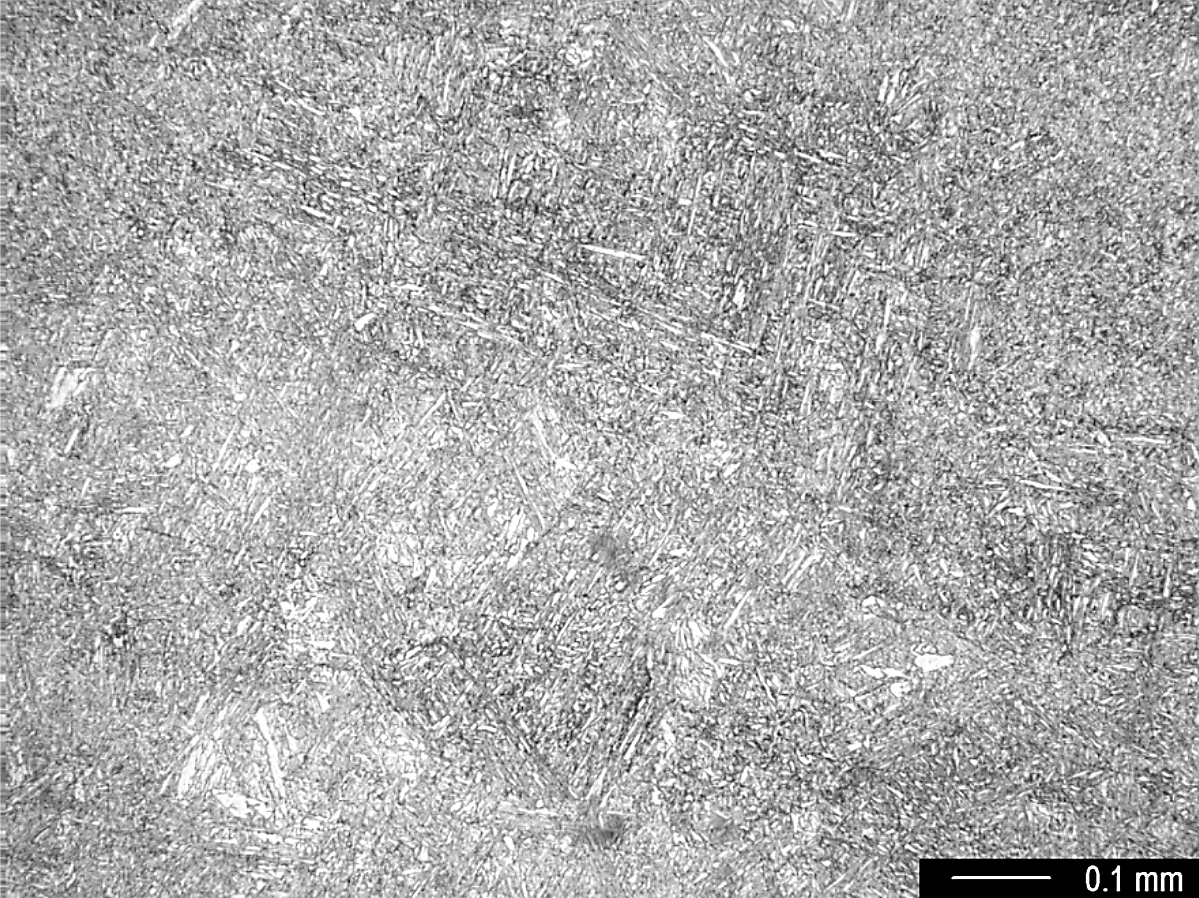
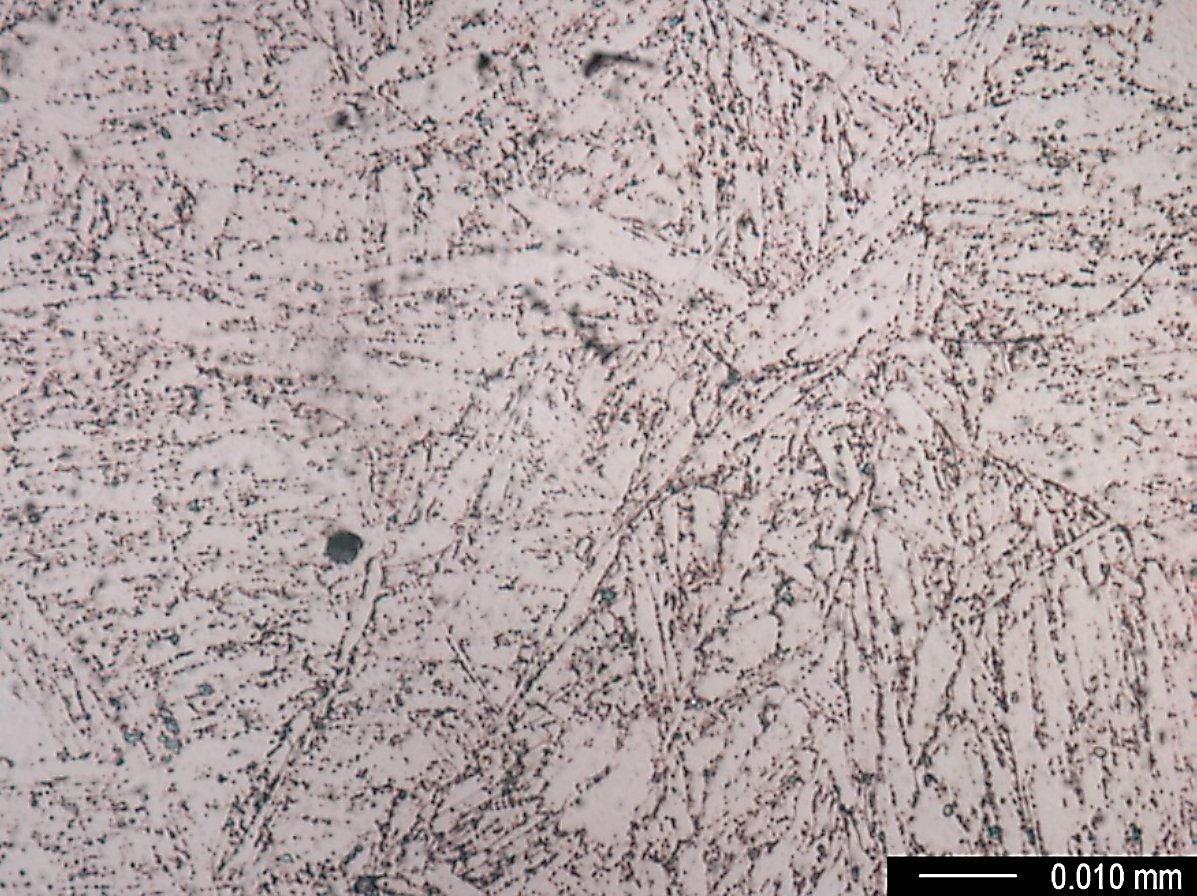
The modified 9CrMo, a ferritic-martensitic (F-M) steel, has tempered martensitic microstructure with a lot of precipitates. These steels have superior elevated temperature creep strength [2,3]; however, their mechanical property is dependent on their ability to maintain tempered microstructure and precipitate distribution and are prone to cracking. Precipitation hardening is one of the main strengthening mechanisms in highly alloyed steels like these. Addition of strong carbide and carbonitride formers such as vanadium (V), niobium (Nb), and titanium (Ti) lead to the precipitation of various precipitates, such as coarser M23C6-type, and finer, thermally stable MX-type precipitates: (Ti,Nb)(N,C), (Nb,V)(C,N), and (V,Nb)(N,C). Coarser precipitates are located at the grain boundaries while finer precipitates are predominantly located in the grain. Smaller interparticle spacing and increased volume fraction of the fine MX carbides enhance the alloy strength. These precipitates obstruct the movement of dislocations, refine grain during normalizing, and delay plastic deformation. However, precipitates such as Z-phase and Laves phase lead to decrease in strength of the alloy by weakening solid solution [4]. Evolution of thermally-induced microstructure can be understood from heat-treatment studies.
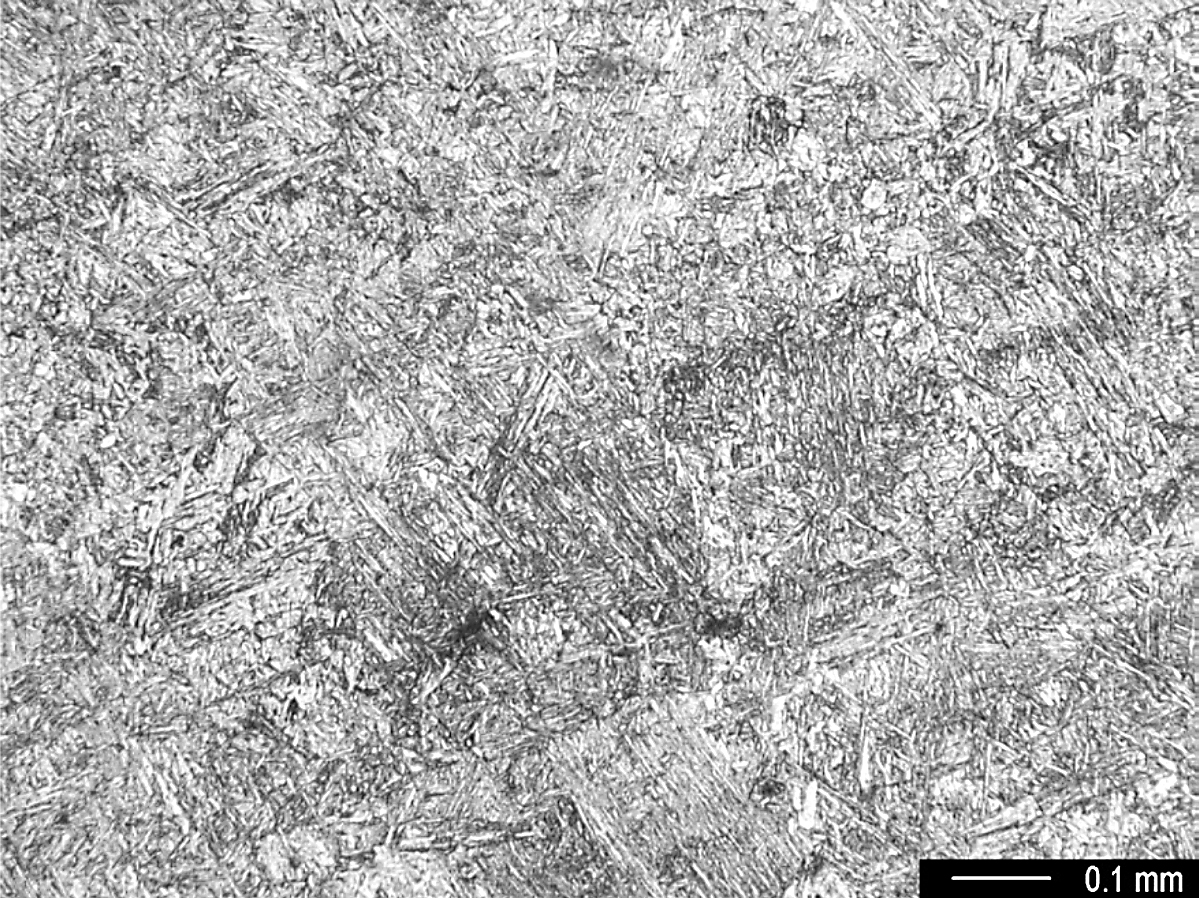
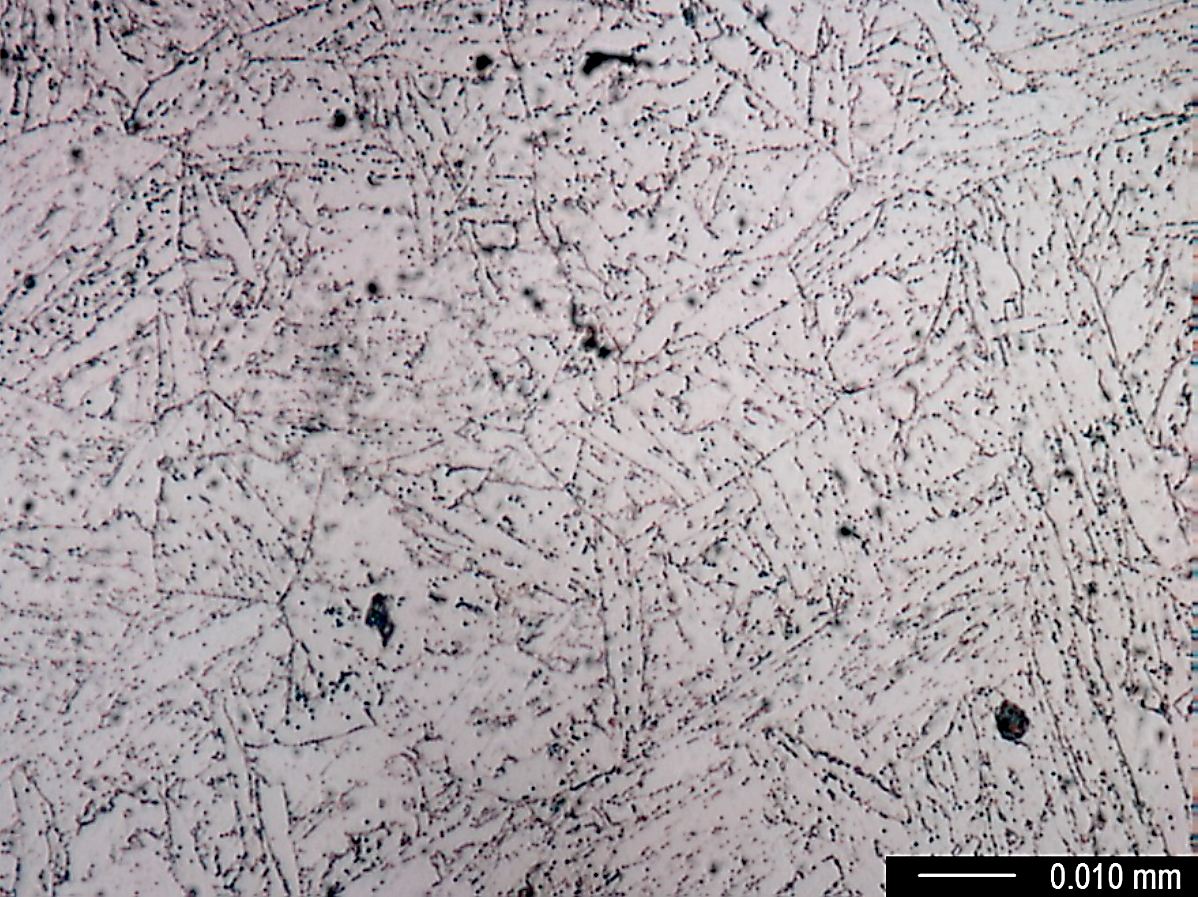
Heat-treatment study of the steel helps in understanding its microstructural evolution and mechanical properties as these materials, whether being used for a pressure vessel or boiler component, go through a series of heating and cooling cycles. In this study, mod. 9Cr1Mo steel samples were normalized at 1,040°C for 2 hours, 8 hours, and 20 hours. With longer normalizing time, coarsening of untampered microstructure was observed as shown in Figure 1 and 2. With increased normalizing time, prior austenite grain size and martensite lath size increased. Samples normalized at 1,040°C for 2 hours were tempered at 790°C for 2 hours, 8 hours, and 20 hours to examine the tempered microstructure. The sample tempered at 790°C for 2 hours had tempered microstructure with elongated martensite lath structure as shown in Figure 3. However, with increasing tempering time, martensite-free coarse structure was observed, as seen in Figure 4. During normalizing and tempering of the steel, several carbides, such as M23C6, Ti/Nb/V rich MX-type carbide/carbonitrides precipitate and coarsen resulting in changes in creep strength, ductility, hardness, and microstructure [5-9]. M23C6-type precipitates coarsens at an accelerated rate compared to MX-type precipitates due to higher solubility of iron and chromium and ferritic structure.
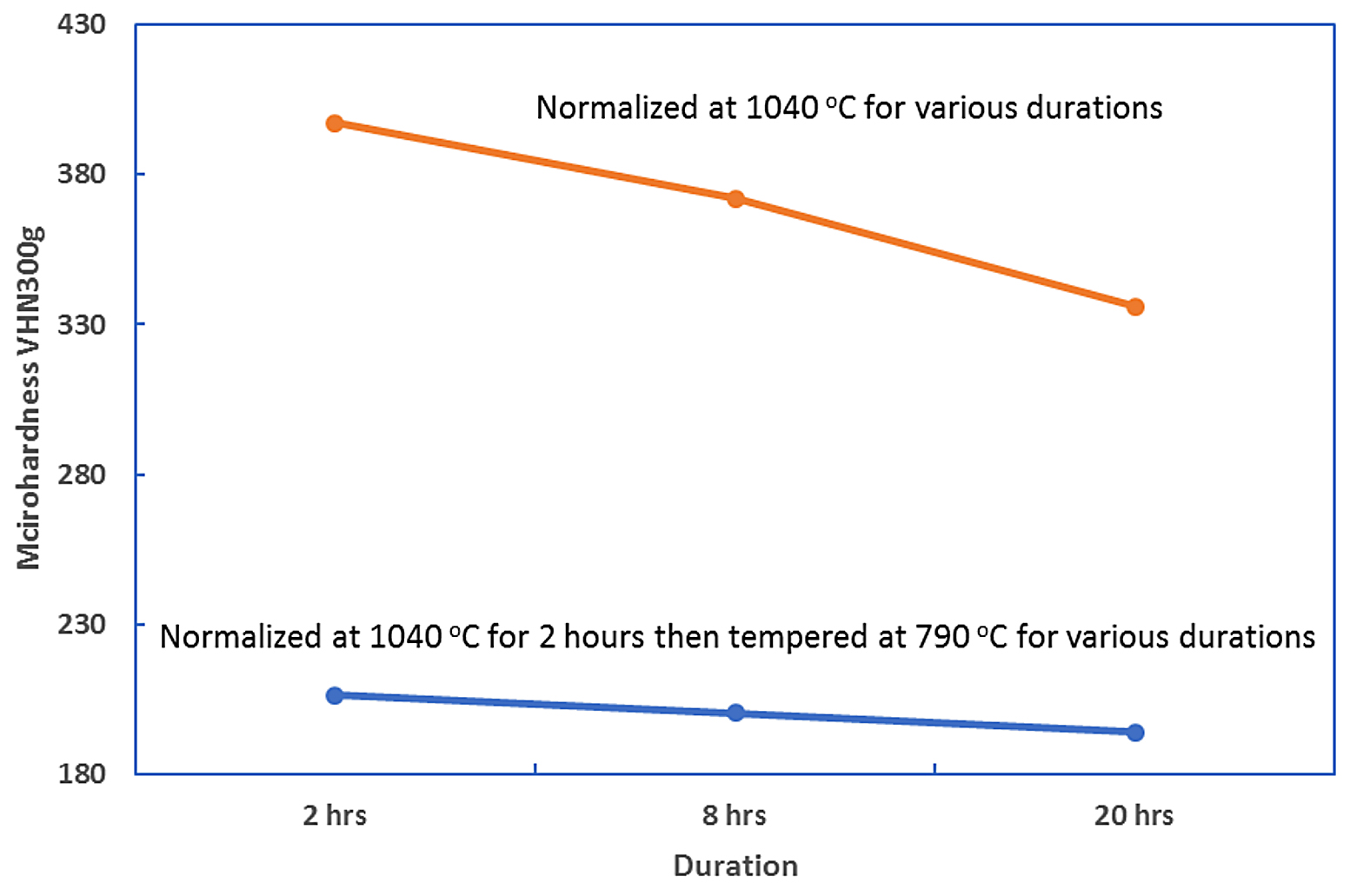
A decrease in hardness was observed in samples normalized for a longer period, and a similar trend was observed in samples tempered for longer periods, as shown in Figure 5. Samples normalized for 2 hours, 8 hours, and 20 hours had a hardness of 397, 372, and 336 HVN300g, respectively. Samples tempered for 2 hours, 8 hours, and 20 hours had hardness of 206, 200, and 194 HVN300g. A drop in hardness was observed in tempered samples compared to normalized ones. Significant reduction in hardness was observed for normalized samples compared to tempered samples with respect to test duration. Li et al. have reported hardness change of over 80 HV between as-received and in-service steel. A non-destructive technique using electromagnetic measurement has shown decrease in hardness of over 40 HVN300g with increased initial permeability and decrease in coercivity for a sample tempered at 780°C for 100 hours [10]. Coarsening of microstructure and precipitates, subgrain recovery and its dissolution, and decreased dislocation density have been attributed to lowering hardness [5,11,12]. Distribution of M23C6-type and MX-type precipitates in the matrix plays a significant role in hardness and elevated temperature creep properties. Coarsening of M23C6-type precipitates, which are primarily distributed across grain boundaries, weakens solid solution strengthening and introduces defects in the matrix, while coarsening of MX-type precipitates are not effective in disrupting the flow of dislocations and pinning subgrains.
References
- Rojas, D. 9%–12% Cr Heat Resistant Steels: Alloy Design, Tem Characterization of Microstructure Evolution and Creep Response at 650 °C. Ph.D. Thesis, Ruhr-University Bochum, North Rhine-Westphalia, Germany, 2011.
- Shrestha, T.; Basirat, M; Charit, I.; Potirniche, G.P.; Rink, K.K. Creep deformation mechanisms in modified 9Cr-1Mo steel. J. Nucl. Mater. 2012, 423, 110–119.
- Basirat, M.; Shrestha, T.; Potirniche, G.P.; Charit, I.; Rink, K. A study of the creep behavior of modified 9Cr-1Mo steel using continuum damage modeling. Int. J. Plast. 2012, 37, 95–107.
- Li, Meimei; Natesan, K.; Chen, W. Report on understanding and predicting effects of thermal aging on microstructure and tensile properties of grade 91 steel for structural components. Argonne Natl. Lab., https://publications.anl.gov/anlpubs/2017/10/138890.pdf.
- Yoshino, M.; Mishima, Y.; Toda, Y.; Kushima, H.; Sawada, K.; Kimura, K. Influence of normalizing heat treatment on precipitation behavior in modified 9Cr-1Mo steel. Mater. High Temp. 2008, 25, 149–158.
- Totemeier, T.C.; Tian, H.; Simpson, J.A. Effect of normalization temperature on the creep strength of modified 9Cr-1Mo steel. Metall. Mater. Trans. 2005, 37, 1519–1525.
- Dudko, V.; Delyakov, A.; Kaibyshev, R. Effect of tempering on mechanical properties and microstructure of a 9% Cr heat resistant steel. Mater. Sci. Forum 2012, 706, 841–846.
- Sawada, K.; Suzuki, K.; Kushima, H.; Tabuchi, M.; Kimura, K. Effect of tempering temperature on Z-phase formation and creep strength in 9Cr-1Mo-V-Nb-N steel. Mater. Sci. Eng. A 2008, 480, 558–563.
- Masuyama, F.; Nishimura, N. Experience with creep-strength enhanced ferritic steels and new emerging computational methods In Proceedings of the 2004 ASME/JSME Pressure Vessels and Piping Conference, San Diego, CA, USA, 25–29 July 2004; Volume 476, pp. 85–92.
- Wilson, J.W.; Liu, J.; Karimian, N.; Davis, C.; Peyton, A.J.Assessment of microstructural changes in Grade 91 power station tubes through permeability and magnetic Barkhausen noise measurements. 11th European Conf. on Non-Dest. Test, Oct. 6 -10, 2014, Prague, Czech Republic.
- Peng, N.G.; Ahmad, B.; Muhamad, M.R.; Ahadlin, M. Phase transformation of P91 steels upon cooling after short term overheating above Ac1 & Ac3 temperature. Adv. Mater. Res. Volume 634 – 638, 1759 – 1765.
- Li, H; Mitchell D. Microstructural characterization of P91 steel in the virgin, service exposed and post-service re-normalized conditions. Steel Res. Intl, 84 (12), 1302 – 1308.
























